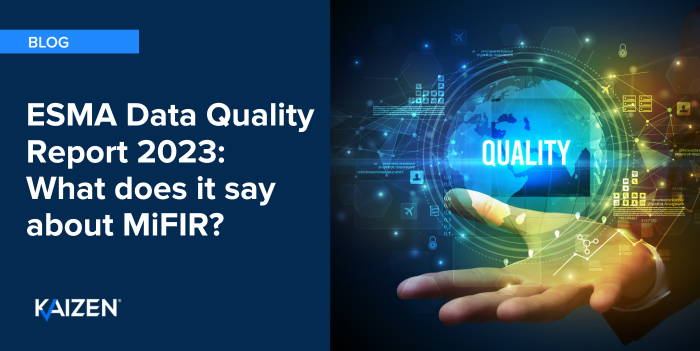ESMA writes the control section of your transaction reporting BRD…

ESMA has published its eagerly awaited regulatory technical standards (RTS) for MiFID II for consideration by the European Commission.
Chapter 7, Market Data Reporting (RTS 22) outlines the obligations for transaction reporting. And for those responsible for drafting their firm’s control section of the Business Requirements Document (BRD) Article 15 of RTS 22 makes their job very easy! Recent regulation, whether it be the Dodd Frank Act (DFA) in the US or EMIR in Europe, has become increasingly prescriptive of the controls expected of participating firms. Article 15 takes this prescriptive nature into a different league, placing testing and reconciliations front and centre.
MiFIR (Article 26(7)) requires firms to verify the completeness, accuracy and timeliness of the transaction reports they submit. RTS 22 expands on this and explains that complete and accurate reporting data is essential to market surveillance and outlines how that is to be achieved.
Under the first section of Article 15 there are the usual requirements relating to the security and functionality of data and measures to enable timely resumption of reporting when reporting systems go down and measures to identify errors and omissions. More specifically there is requirement on firms to have mechanisms to avoid duplicate reporting and under reporting.
Whereas over-reporting is tolerated under current obligations, reporting transactions where there is no obligation is not permitted and Article 15 says firms will need to have mechanisms in place to identify over-reporting. Over-reporting is the submission of a transaction report where it is not required under the reporting rules. This can be reporting a trade on an instrument that is not reportable or reporting a transaction on a non-reportable event such as dividend reinvestment.
When firms become aware of any of these types of errors or omissions they need to be reported to the relevant competent authority. To that end ESMA mandates not only reconciliations but specifies the data sources and fields to be included; reconciliations should be between front office trading records and information contained in transaction reports and checks should be in place to prove the timeliness of reports and the accuracy and completeness of all the individual data fields.
In tandem with regular reconciliations, Article 15 states that firms are required to put in place a testing methodology and approach for their reporting processes. The multimillion pound fines issued by the Financial Conduct Authority for transaction reporting breaches over the last five years have often been on transactions which have been reported as valid and been through some form of reconciliation process but ultimately have still breached Chapter 17 requirements of the supervisory manual. It is these breaches that your testing approach must be able to identify. The often piecemeal, sample-based testing that is common in firms today will not be satisfactory.
Kaizen Reporting’s testing approaches are setting the industry standard and will enable you to meet your MiFID II requirements efficiently and cost effectively. We combine unrivalled regulatory knowledge with the latest data analytics to provide the highest level of confidence in transaction reporting.


